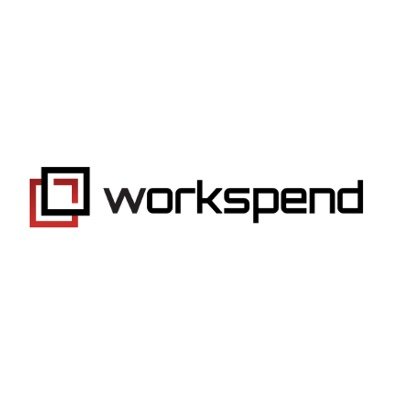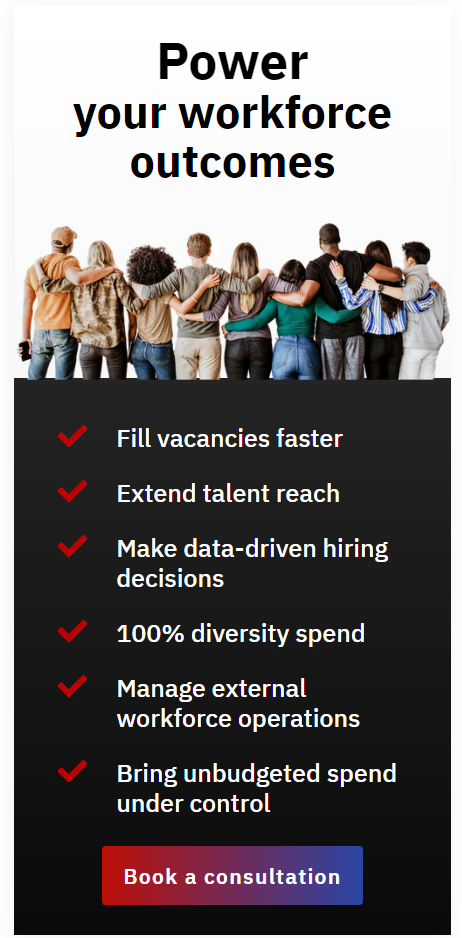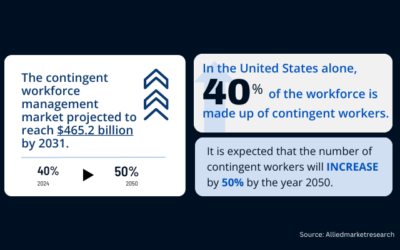
Jake Ellis - 6 min read
Managed Contingent Workforce: To MSP or Not to MSP?
In the continually evolving landscape of workforce management, businesses often find themselves at a crucial crossroads – should they handle the management of their contingent workforce internally, or would partnering with a Managed Service Provider (MSP) be a more strategic move? In this article, we delve into the intricacies of this decision, exploring the advantages and disadvantages of both approaches.
To MSP, or Not to MSP? Unraveling the Dilemma
This question has gained heightened significance given the shifts in workforce management dynamics. The integration of technology platforms with artificial intelligence (AI), alongside the ongoing preference for direct sourcing, has reshaped the playing field. These changes offer fresh perspectives on tackling the perpetual challenge of efficiently managing an external workforce.
The decision to adopt a managed contingent workforce program partner or to rely on internal resources is a strategic decision that can significantly impact your operational efficiency and adaptability. On one hand, MSPs bring expertise, streamlined processes, and often, cost savings. On the other, the rise of AI and direct sourcing tools empowers companies to take more control, offering potentially greater flexibility and customization.
We know many organizations cannot comfortably answer the ‘To MSP, or Not to MSP’ question —if they tried, they’d be doing so completely blind because they lack the data insights needed to make an informed decision.
When you have insights to drive decisions based on solid data, the path forward becomes obvious. Unfortunately, many companies find themselves overwhelmed by an array of systems that fail to deliver the uniform ‘single version of the truth’ insights they need, leaving them without the necessary clarity. The real question then becomes not just about choosing an MSP or not, but whether your organization has access to the kind of data it needs to drive confident, informed decisions.
The Case for the MSP
When it comes to setting out a managed contingent workforce agenda, the MSP plays a pivotal role—one that extends beyond mere service provision. An MSP’s job is to streamline the complex process of managing an external workforce, ensuring that it aligns with a company’s strategic goals and operational needs. That said, an MSP is more than just a service provider, they’re your technology enablement partner and advisor, serving up the necessary workforce management expertise to corral hiring managers, organize supply chains and navigate complex workforce challenges.Trust in the MSP as your indispensable ally in the pursuit of streamlined, effective workforce management.
In this relationship, MSPs can bring about cost-efficiency, compliance, and risk management. By centralizing and standardizing the process of managing an external workforce, MSPs help companies reduce administrative overhead, negotiate better rates, and ensure compliance.
In the dynamic landscape of today’s workforce, MSPs are not lagging behind the changes. Embracing innovation, they’ve seamlessly integrated technologies like AI and machine learning into their services, ushering in a new era of sophistication and efficiency. These upgrades empower MSPs to excel in candidate matching, leverage predictive analytics for labor requirements, and streamline administrative processes. Beyond operational support, they have evolved into strategic partners, extending their services to encompass workforce planning and consultancy. This strategic shift is a response to the increasing intricacies of managing a diverse and dynamic workforce.
The Rise of AI and Direct Sourcing mean MSPs are no longer the only option
The rise of AI and the growing trend towards direct sourcing means that using an MSP to manage your external workforce is no longer the only option. AI in workforce management is not just a futuristic concept, it’s a present-day reality. AI tools are being used to automate repetitive tasks, provide insights through data analysis, and even predict staffing needs. This technology enables businesses to make more informed decisions, often at a speed and accuracy that manual processes cannot match.
AI is transforming more than just data; it’s changing the entire approach to workforce management.
Direct Sourcing is changing how organizations think about talent sourcing
Companies today can control their own external workforce through direct sourcing. This is where organizations develop their own talent pools of candidates, often comprising those who have already had some form of contact with your business. These self-service talent pools can also include contractors you’ve previously hired, past unsuccessful applicants or workers who’ve already expressed an interest in your business, etc. These ‘familiar to your organization’ candidates are more likely to know your brand and the attitudes, values, etc., reducing the time to hire. They might even have volunteered to pass through screening and background checks to get further ahead in your ‘ready-to-hire’ estimations.
These advancements are influencing how companies view and interact with MSPs. With AI and direct sourcing tools becoming more accessible and sophisticated, businesses are now reassessing the role of MSPs in their workforce strategy. Some are opting to integrate these technologies into their existing MSP relationships, while others are considering taking more workforce management functions in-house.
Companies today can source a self managed contingent workforce through direct sourcing. This is where organizations develop their own talent pools of candidates, often comprising those who have already had some form of contact with your business. These self-service talent pools can also include contractors you’ve previously hired, past unsuccessful applicants or workers who’ve already expressed an interest in your business, etc. These ‘familiar to your organization’ candidates are more likely to know your brand and the attitudes, values, etc., reducing the time to hire. They might even have volunteered to pass through screening and background checks to get further ahead in your ‘ready-to-hire’ estimations.
These advancements are influencing how companies view and interact with MSPs. With AI and direct sourcing tools becoming more accessible and sophisticated, businesses are now reassessing the role of MSPs in their workforce strategy. Some are opting to integrate these technologies into their existing MSP relationships, while others are considering taking more workforce management functions in-house.
Does size really matter?
Deciding whether to engage a MSP or manage the contingent workforce in-house is significantly influenced by the size and scale of a company’s operations. For large organizations with extensive contingent workforce needs, MSPs often present a practical solution. They bring in the expertise and resources necessary to manage large numbers of external workers, often spread across multiple locations or skill sets. Handling the complicated logistics and administration required to maintain a large external workforce is much easier with an MSP’s help.
On the other hand, smaller companies or those with smaller external workforce requirements might find greater value in managing these processes themselves. In these cases, the direct control and potentially lower costs of in-house management can outweigh the benefits of outsourcing to an MSP. Especially with the advent of AI and direct sourcing tools, these companies can effectively manage their contingent workforce without the need for an external provider.
Why most companies would be making this decision blind
Whether your company is large, small or somewhere in the middle, you cannot make this decision with actionable insights and data. This detailed information is essential for companies to make informed strategic decisions. Actionable insights offer a clear understanding of current workforce dynamics, future needs, and potential areas for improvement.
Yet many companies act without these actionable insights. The lack of proper data can significantly hinder a company’s ability to make effective decisions. This can lead to a range of issues, such as misalignment of workforce capabilities with business goals, inefficiencies in staffing, and missed opportunities for cost savings or quality improvements. In the worst-case scenario, it can result in compliance risks and legal challenges.
Collecting the right data is just the first step. The real challenge lies in transforming this data into actionable insights. This involves not only gathering quantitative data, such as staffing numbers and costs but also qualitative data like employee satisfaction and performance metrics. Advanced analytics tools, often powered by AI, play a pivotal role here. They help in interpreting complex data sets, identifying trends, and predicting future staffing needs.
For instance, data analytics can reveal patterns in staffing demands, enabling companies to anticipate and plan for peak periods. It can also highlight areas where staffing costs can be optimized without compromising on quality or output. By investing in robust data collection and analytics capabilities, companies can elevate their workforce management from a reactive process to a proactive, strategic function.
Final Thoughts
IF YOU ARE INTERESTED IN HOW TO BEST IMPLEMENT A managed contingent workforce, Choosing whether or not to engage an MSP becomes crystal clear with the right data and actionable insights. The real question is: do we have the insights needed for informed decisions? This requires a robust technology infrastructure.
Investing in data collection and analysis empowers companies to shift from reacting to workforce issues to proactive planning. Your external workforce is unique, and the best solution hinges on specific business needs and the dynamic workforce landscape. To make this determination, having precise data and insights is essential. With this foundation, opting for an MSP isn’t a shot in the dark; it’s a strategic move toward a successful external workforce future.
You may also like:
Is it Time to Invest in Workforce Analytics?
Is it Time to Invest in Workforce Analytics?In the dynamic landscape of today's business world, staying ahead isn't just an advantage; it's an absolute necessity. Workforce analytics has emerged as a pivotal tool for forward-thinking companies aiming to navigate the...
AI Should Augment Human Intelligence, Not Replace It
Will smart machines replace human workers? How human intelligence can work with artificial intelligence to produce augmented intelligence.
Reducing Contingent Labor Costs: Strategies for Maximizing Efficiency
Discover how Workspend can help you reduce contingent labor costs and boost efficiency. Gain insights, implement strategic sourcing, optimize workforce planning, and ensure compliance. Partner with us for streamlined solutions. Contact us today!
Power your workforce outcomes with a diversity MSP






